
Step Inside the Most Colorful House We’ve Ever Seen
This Yucca Valley home is a playful desert oasis.
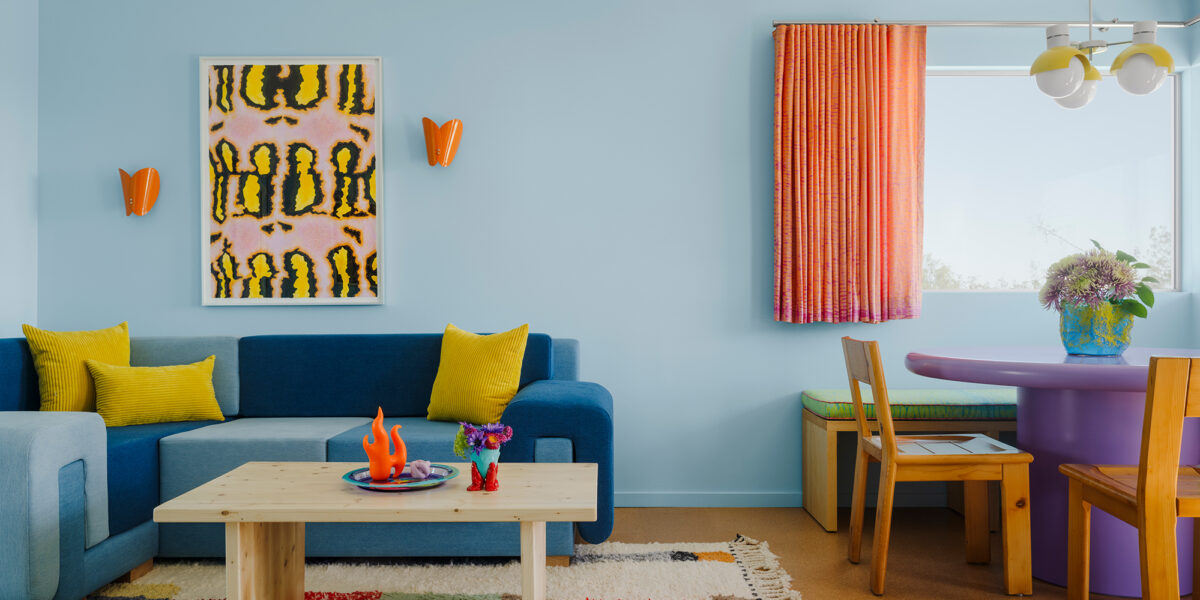
There’s color in design and then there’s COLOR (yes, in all caps) in design. This Yucca Valley home is most definitely the latter. The entire property is absolutely drenched in vibrant hues—you might even call it a colorful oasis in the desert. Interior and product designer Leah Ring of Another Human bought the fixer-upper in 2021 as a retreat from the city and a place where she could go really wild with creativity.
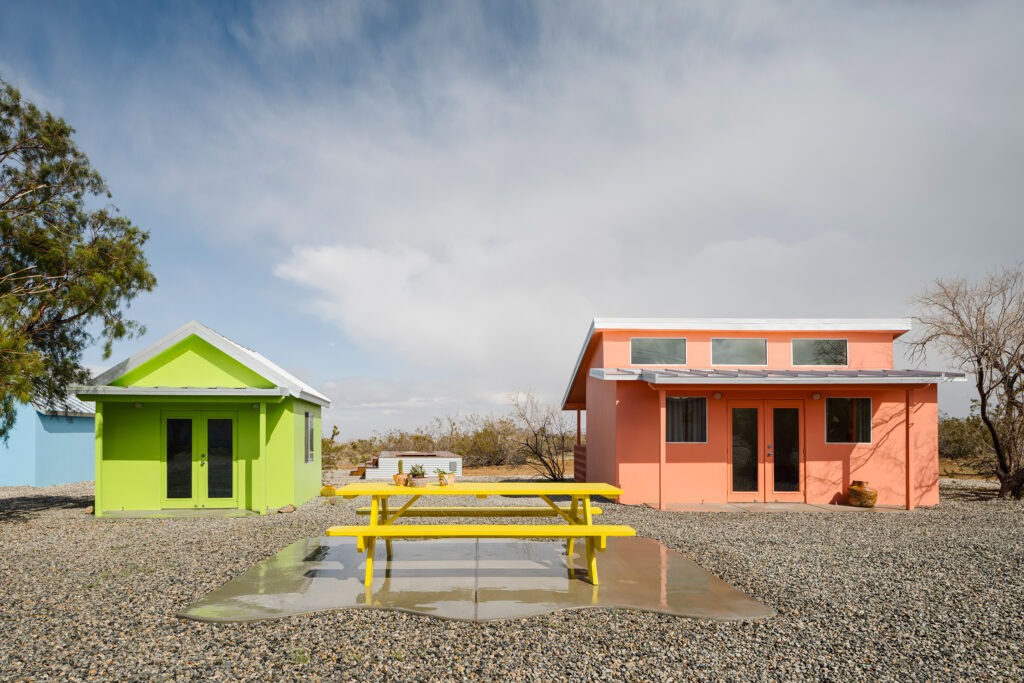
Lance Gerber
“I’ve loved the high desert for years—it’s always a place that I find very calming and beautiful,” Leah explains. “As I had newly launched my interiors practice, I was eager for a project that I could really put my stamp on, and the real estate prices in L.A. were just too far out of reach so I decided to look elsewhere. Because my then-partner, now husband, and I are both self-employed we are fortunate to have a little more flexibility with our schedules so I thought it would be a nice retreat for us to get out of L.A. and enjoy some quiet and solitude in the desert.”

Lance Gerber
It was a fixer-upper, all right—the buildings barely looked finished and the materials were decaying from years of neglect. The property had a 560-square-foot main house with one tiny bedroom that could only fit a twin bed and bathroom; a “bunk house” that also had a twin bed and a tiny bathroom; and two shed-like structures in unfinished states.
But Leah didn’t mind the property’s run-down state, in fact, when she was house-hunting she was looking for something she could completely gut-renovate. “I was open to the more rough-around-the-edges properties because I could envision the potential for transformation,” she says.

Lance Gerber
Color was the main theme when it came to the home’s design and renovation—and overall, it’s the foundation of all of Leah’s work. “My primary goal was to inject a whole lot of color into the project and to take a lot of risks that clients may not let me take,” Leah says. “I had a lot of ideas swirling around after years of working in interior design for other firms, and I used my own house as a way to experiment and test a lot of concepts that I’d been wanting to try. First and foremost, as with all of my work, I wanted the house to feel joyful and fun—considered but definitely not self-serious.”

Lance Gerber
Since she sees a lot of the California minimalist aesthetic in her work as a designer, Leah wanted to show people how fun (and not overwhelming) color can be, especially since she sees a lot of the California minimalist design style in her work. “Also, because I was my own client, I made color decisions that most clients would not be on board with—like a lime green and aqua blue kitchen—because I didn’t want to squander such a wonderful creative opportunity to push myself,” she explains. “I always tell people that this project is an extreme version of my taste, but also I always knew that this would be our weekend getaway so I could think about the space differently than a family home that is occupied all the time.” Each room is painted a different color and contains furniture that’s a mix of Leah’s own designs, from California designers, or vintage.
Aside from the house’s original foundation (which Leah and team added onto) and some of the structural walls, everything else was completely gutted. The drywall, flooring, windows, doors, roof, electrical work, and plumbing all had to be replaced.
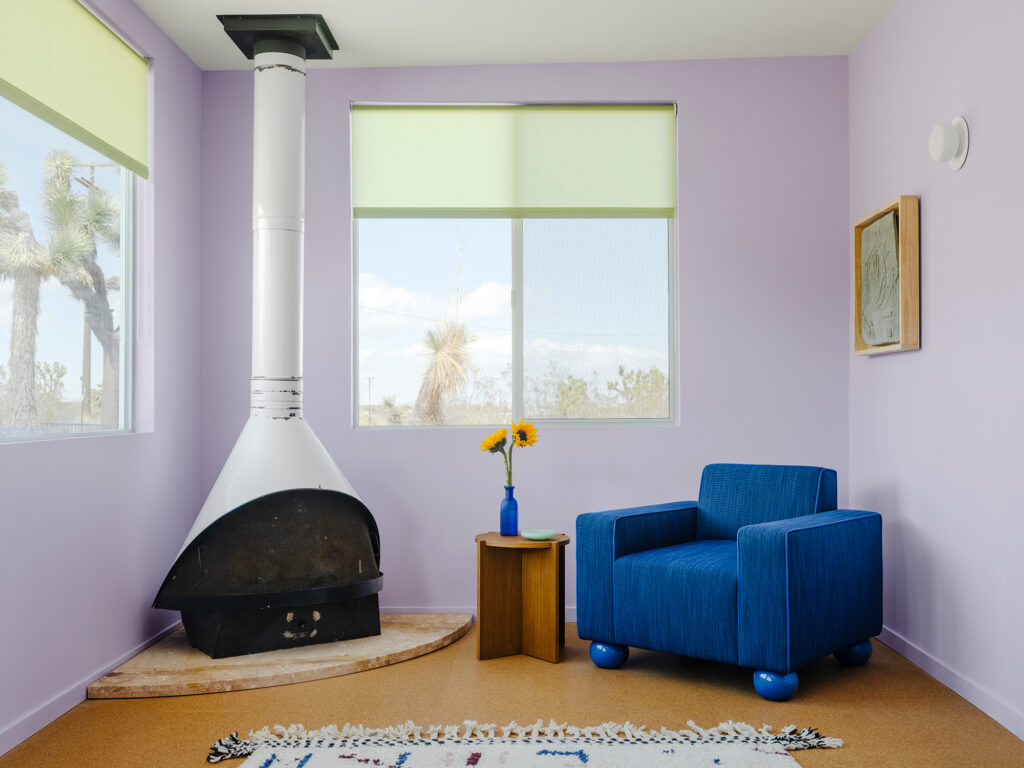
Lance Gerber
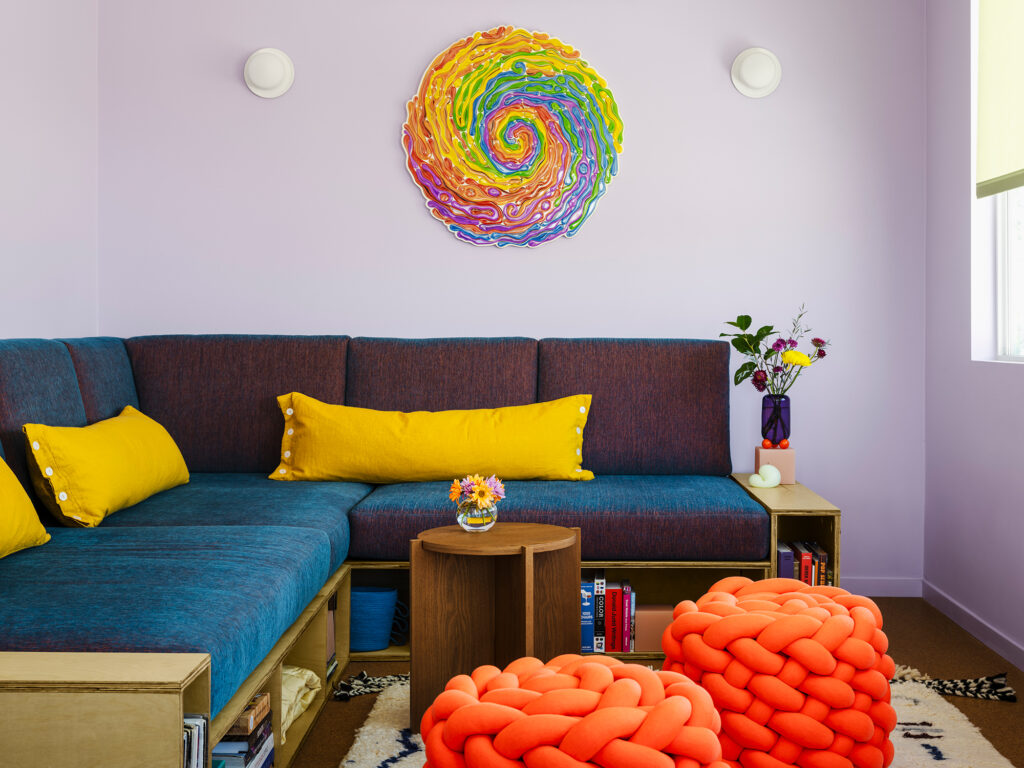
Lance Gerber
The first challenge was figuring out the layout of the main house to make it feel more spacious. To make the flow better, they moved walls and opened up the living space. “We also added on our primary bedroom and made the former screened porch a proper sunroom so the house actually feels very comfortable for us and family or friends that come to visit,” she says.

Lance Gerber
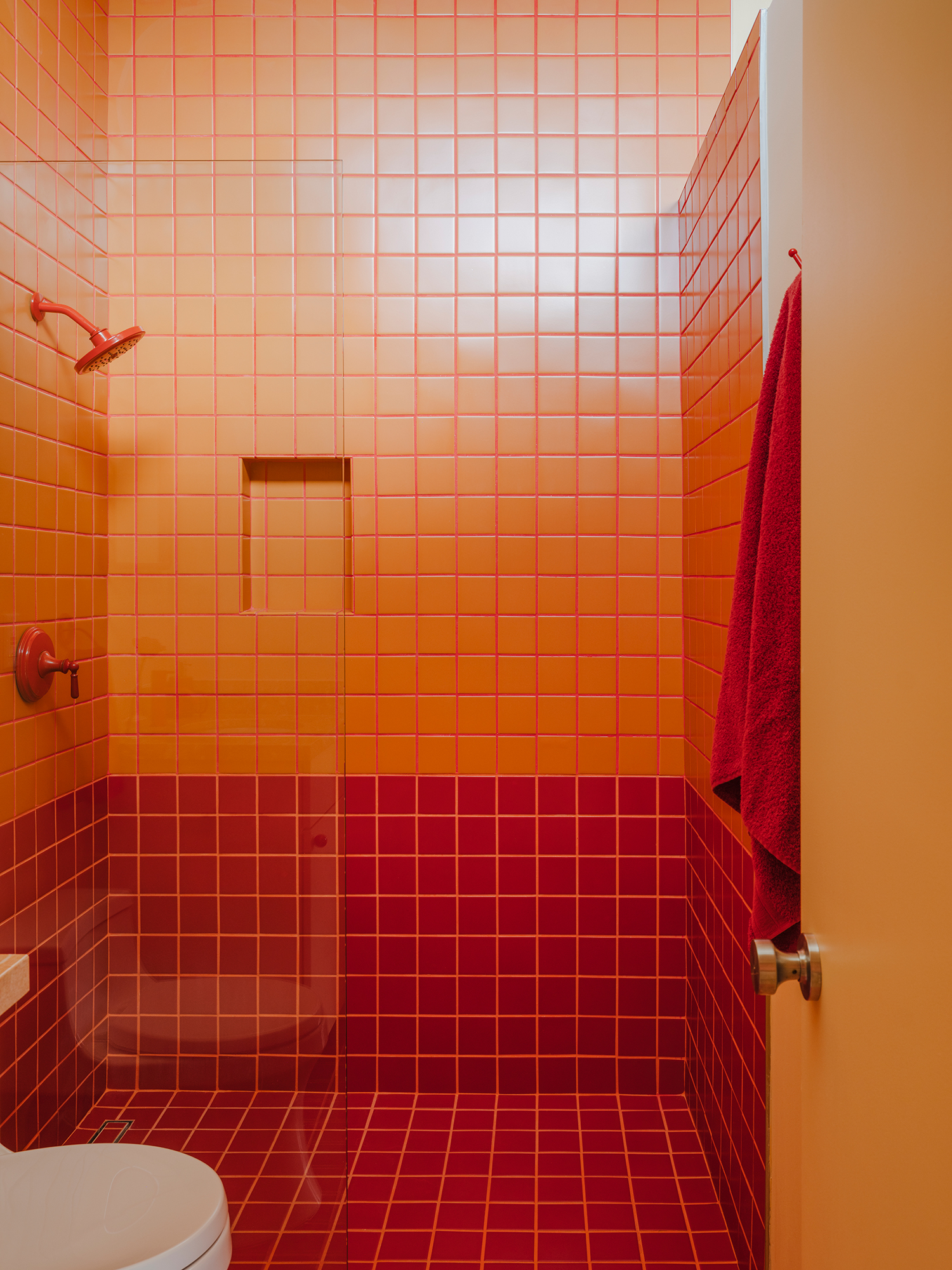
Lance Gerber
When it came to the kitchen and both bathrooms (in the main house and bunkhouse), Leah was able to make them larger by moving water heaters and other external equipment. Much like how the lime green and aqua blue kitchen was a fun color experiment, so were the bathrooms—the primary bathroom has a fun pattern of blue and green tiles and the bunkhouse bathroom features red and orange tiles.
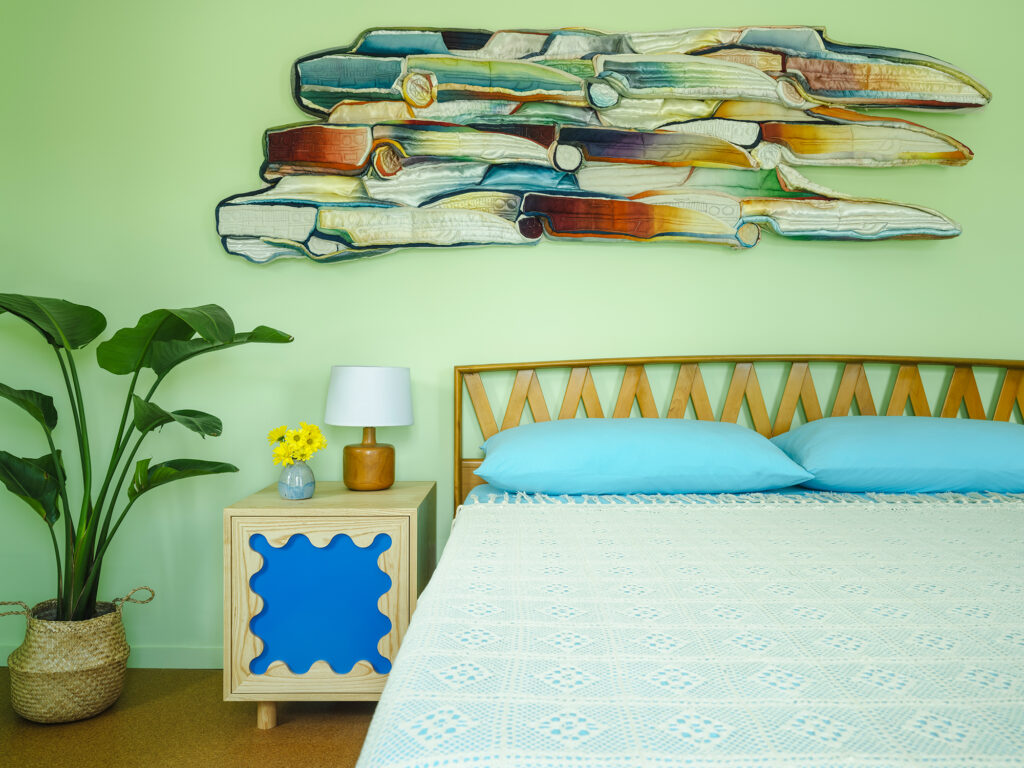
Lance Gerber
The kitchen’s color palette influenced the hues in the breakfast nook and living room. And Leah knew she wanted a green primary bedroom, so she just picked a green and built the palette from there. “Because the space is so small, I had all of the material palette colors on my boards in the studio and would just build little by little, making sure that the balance of color felt interesting and full in each room, and that the colors added related to the other colors visible in the sightline,” she explains.

Lance Gerber
While the main house is a study in cool colors, the bunkhouse is an exercise in warm colors, which was a change for Leah since she normally designs with blues and greens. “It was a fun brief for myself to create this warm colored world which I wanted to feel Lynchian—like you might have just stumbled upon this eccentric roadside motel,” she says.

Lance Gerber
Leah and team added doors, windows, flooring, drywall, and little porches to the two unfinished shed-like structures. One serves as her office and it’s a dreamy, ethereal space. “I had a fantasy about a cloud office so I worked with a company on the custom cloud mural wallpaper and then designed the custom desk, armchair, and ottoman in blue tones that worked with the wallpaper,” she says. The second shed-like structure is her husband’s studio.

Lance Gerber
For a sense of continuity, they re-did all the roofs of the structures. And the exterior colors of the buildings are inspired by the desert surroundings. “The peach and lavender color of the main house and bunkhouse really match the beautiful sunsets out there, and the blue and green of my office and my husband’s studio reflect the beautiful blue skies and plant life that is surprisingly prevalent on the property,” Leah says.
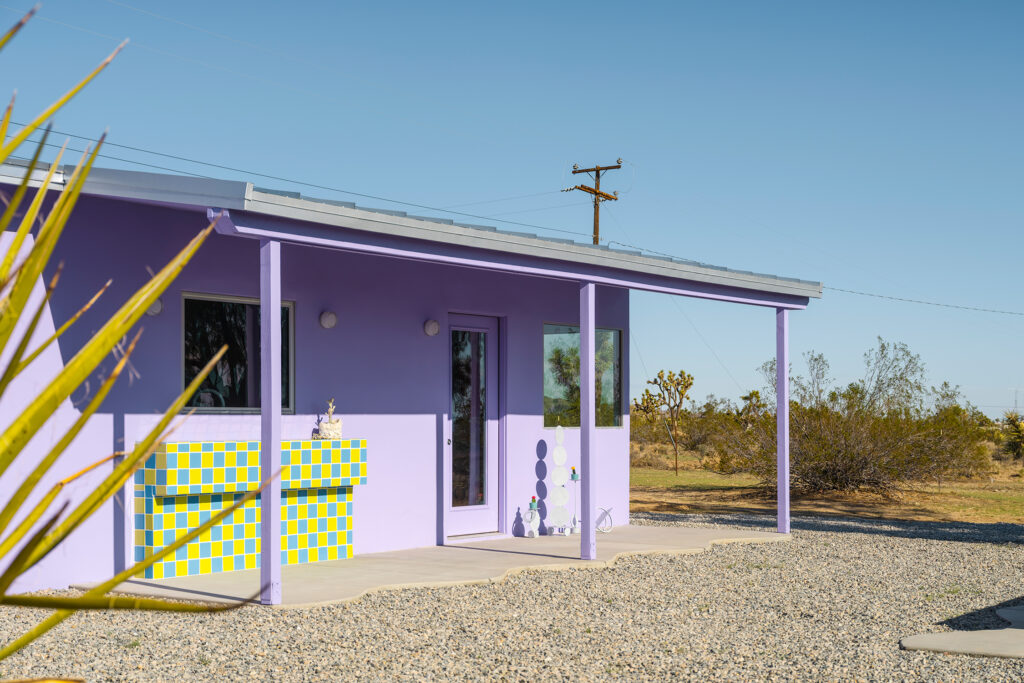
Lance Gerber
The project was different from others since Leah was simultaneously designing this house in bits and pieces while trying to get her interiors business off the ground, but she is so happy with how the project turned out. “I typically like to fully conceptualize a space and then make a plan for the execution of the design, but for my own house I had to remain a lot more fluid and flexible and I learned a lot throughout the project,” she explains. “As a lot of the design elements were experiments, I think some are more successful than others, but I don’t have any regrets as I stayed true to my gut and I learned a lot. I’m sure the next home I design for myself will be completely different, but that’s what makes being an interior designer so fun! No two projects are the same.”
And it’s the perfect space to host guests, who also love the home. “Everyone that visits says that it’s such a happy house—I think the joyful irreverence and sense of play is so inherent in the design that it creates a wonderful feeling in the space,” she says.
